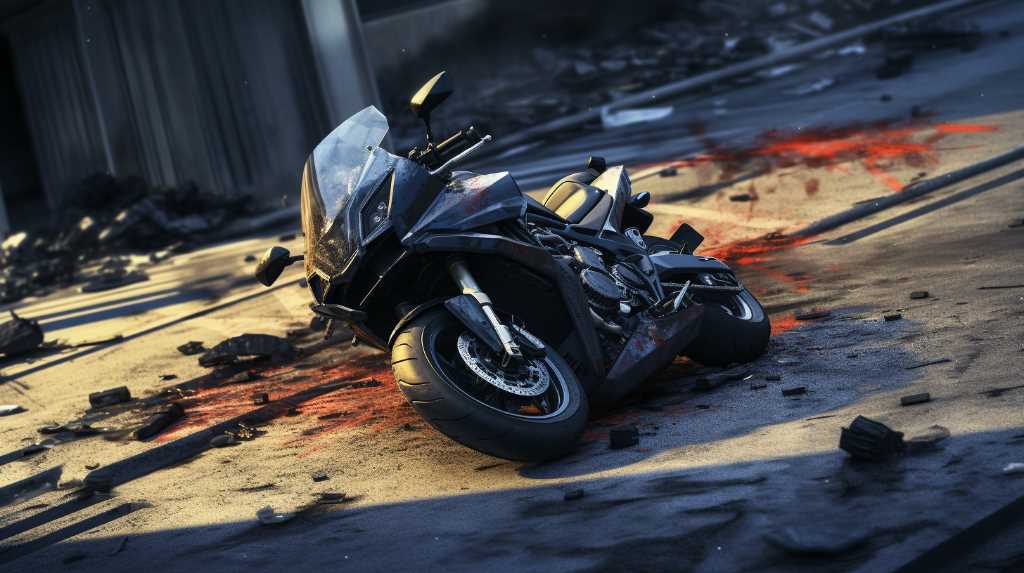
Showing who was at fault in a motorcycle crash is really important for settling legal issues and insurance claims. To figure out who is responsible, you need to look closely at the crash site. Look for things like tire marks, damage to the vehicles, and the state of the road.
Getting stories from people who saw the crash is also key because they can add important details to what you see at the scene. You must understand the traffic laws well because you’ll compare what happened to these rules. When you carefully check all the clues, you can piece together what happened before the crash.
It’s also a good idea to talk to a lawyer who knows a lot about motorcycle crashes. They can help you in a big way, making sure you take the right steps to show who was at fault and to stand up for the person who got hurt.
Assessing the Accident Scene
Thorough examination of the accident scene is an essential first step in establishing liability in a motorcycle collision. Meticulous scrutiny of the location yields critical evidence that may indicate the sequence of events leading to the incident.
This includes analyzing skid marks, which can reveal speeds and movements prior to the collision, inspecting debris fields to determine points of impact, and assessing environmental conditions that may have contributed to the accident. Photographic documentation is indispensable, capturing immutable details that are susceptible to rapid change.
Furthermore, gathering statements from eyewitnesses can substantiate findings with human perspective. In the pursuit of justice, this precise approach to scene assessment is instrumental in construing the nexus of causation, thereby underpinning the legal argument for or against fault.
Gathering Witness Testimonies
Getting the stories from people who saw the motorcycle crash is really important for figuring out who was at fault. These witnesses can share what they saw, which might show things that the physical clues can’t tell us. It’s important to talk to these people quickly because as time goes by, they might forget or mix up the details.
Lawyers need to write down everything the witness says about where they were, what they saw happen before, during, and after the crash, and if the people in the crash said anything important. If you match up what the witnesses say with other evidence, it can make a much stronger case to show who should be responsible for the motorcycle accident.
For example, if a witness says they saw one of the drivers run a red light just before the crash, and you also have traffic camera footage showing this, it’s a strong point for the case. Lawyers should always make sure to get these stories down accurately and in as much detail as possible.
Understanding Traffic Laws
Familiarizing oneself with local traffic regulations is a crucial step in establishing liability in a motorcycle accident case. Traffic laws provide a framework for determining the standard of care expected from each road user. A thorough understanding of these laws is indispensable for identifying any breaches that may have occurred during the incident.
When the rules of the road are applied accurately to the facts at hand, liability becomes clearer. For instance, proving that a driver failed to yield the right of way or violated speed limits can significantly support your argument of negligence. Mastery of traffic statutes allows for a persuasive presentation of the circumstances surrounding the accident, thereby positioning your claim for favorable consideration.
Precision in aligning the facts with the legal expectations is imperative for establishing fault conclusively.
Analyzing Evidence Thoroughly
Looking closely at all the evidence is key when figuring out who’s at fault in a motorcycle crash. You need to check out everything – photos, what witnesses said, and videos from security cameras – to really understand what happened. Having an expert look over the details can help point out important stuff, like how fast the bike was going, its path, and where it hit the other vehicle. You have to go over each piece of evidence carefully to put together a story that makes sense and holds up in court.
It’s super important to keep all your evidence in order, so you can use it in a trial. Sometimes, you might need a forensics expert to make sense of complex info, or someone who’s really good at figuring out how the accident happened to explain things in a way the court will find strong and convincing.
In the end, looking at everything closely and fairly is what helps you prove who was responsible for the motorcycle accident.
Consulting Legal Professionals
If you’ve been in a motorcycle accident and want to prove it wasn’t your fault, talking to a lawyer is very important. A good lawyer who knows a lot about laws for cars and motorcycles will look at every part of the accident carefully. They’ll make a clear and strong plan based on laws that have been used before.
These lawyers are good at dealing with insurance companies, which often try to pay as little as they can. Your lawyer will use their deep understanding of road laws and who is to blame in accidents to argue well for you. This can really help you get a good result and the money you deserve for what you’ve been through.
Conclusion
To prove who was at fault in a motorcycle accident, you need to be very careful and detailed. Start by closely looking at the accident spot, and talk to people who saw what happened. Make sure you understand the traffic rules that apply to your case.
Examine all the evidence carefully. It’s a good idea to get a lawyer because they can help make your case stronger and clearer. They’ll work hard to find out who caused the accident and make sure they answer for it.
This careful process is very important to make sure that justice is served and that the rights of those involved are protected.